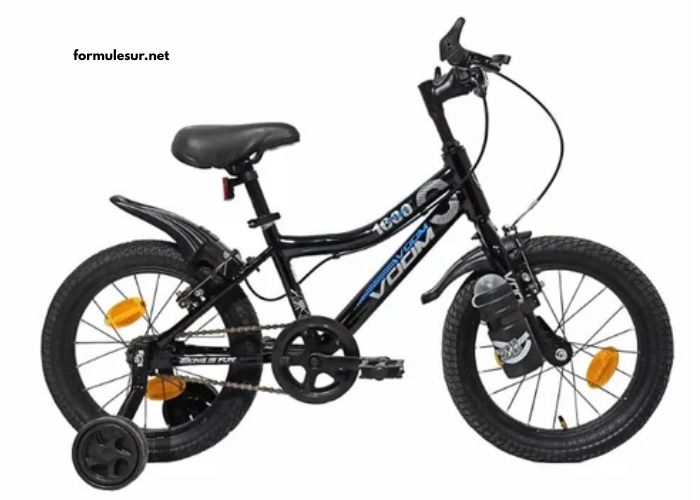In the modern age of sedentary lifestyles and high stress levels, achieving optimal health is no longer just about hitting the gym—it’s about setting well-rounded fitness goals that align with your overall wellness. Whether you’re a fitness enthusiast or a beginner looking to make a change, setting realistic and effective fitness goals is the first step toward a healthier, more energized life.
In this comprehensive guide, we’ll explore key fitness goals that support optimal health, how to achieve them, and why they matter. Let’s dive in.
Why Fitness Goals Matter
Setting fitness goals gives you purpose and direction in your wellness journey. Rather than working out without a plan, goals provide a structure that helps track progress and stay motivated. Here are a few reasons why fitness goals are essential:
-
Provide measurable progress
-
Improve mental and physical health
-
Reduce risk of chronic diseases
-
Enhance self-discipline and motivation
-
Encourage a balanced lifestyle
H2: Top Fitness Goals for Optimal Health
Below are the most effective fitness goals you can set and work toward to boost your overall health and well-being.
H3: 1. Improve Cardiovascular Endurance
Cardiovascular endurance refers to how efficiently your heart and lungs deliver oxygen to your muscles during sustained physical activity. Good endurance lowers your risk of heart disease, stroke, and other health problems.
How to achieve it:
-
Include aerobic exercises such as brisk walking, running, swimming, or cycling at least 3–5 times a week.
-
Use the talk test to stay in the moderate-intensity range.
-
Track progress with fitness watches or heart rate monitors.
Pro Tip: Start with 20–30 minutes of cardio per session and gradually increase the duration and intensity.
H3: 2. Increase Muscle Strength
Muscular strength is essential not just for lifting weights but for everyday activities like carrying groceries or climbing stairs. It helps with posture, bone density, and injury prevention.
How to achieve it:
-
Incorporate strength training exercises 2–4 times per week.
-
Use free weights, machines, resistance bands, or bodyweight exercises.
-
Focus on compound movements: squats, deadlifts, push-ups, and pull-ups.
Goal Example: Increase your bench press or squat weight by 10% over 8 weeks.
H3: 3. Build Muscle Endurance
Muscular endurance is the ability of a muscle group to perform repeated actions without fatigue. It supports longer workouts and better performance in daily tasks.
How to achieve it:
-
Engage in higher-repetition sets (12–20 reps) with moderate weight.
-
Combine endurance training with circuit routines or HIIT (High-Intensity Interval Training).
-
Train specific muscle groups 2–3 times weekly.
H3: 4. Achieve a Healthy Body Composition
Body composition refers to the ratio of fat to lean mass in your body. A healthy body composition reduces the risk of diabetes, hypertension, and metabolic syndrome.
How to achieve it:
-
Combine resistance training, cardio, and a nutrient-dense diet.
-
Monitor body fat percentage using calipers, DEXA scans, or smart scales.
-
Avoid crash diets—focus on sustainable changes.
Optimal Body Fat Range:
-
Men: 10–20%
-
Women: 18–28%
H3: 5. Enhance Flexibility and Mobility
Flexibility and mobility support joint health, reduce injury risk, and improve overall movement quality.
How to achieve it:
-
Integrate stretching routines or yoga into your schedule.
-
Perform dynamic stretches before workouts and static stretches after.
-
Focus on all major muscle groups, especially hips, shoulders, and hamstrings.
Tip: Attend yoga or Pilates classes for structured mobility enhancement.
H3: 6. Maintain a Healthy Weight
Weight management is not just about appearance—it significantly impacts cardiovascular, hormonal, and metabolic health.
How to achieve it:
-
Maintain a caloric balance by eating healthy and staying active.
-
Aim for sustainable fat loss (1–2 lbs per week) if overweight.
-
Avoid fad diets and focus on long-term nutritional habits.
H3: 7. Improve Core Stability
Your core is the foundation of strength, balance, and posture. A strong core prevents back pain and enhances physical performance.
Core Exercises to Include:
-
Planks
-
Russian Twists
-
Bicycle Crunches
-
Hanging Leg Raises
Set a Goal: Hold a plank for 2 minutes or perform 50 crunches without stopping.
H3: 8. Establish Consistency in Workouts
Consistency often outweighs intensity. Regular movement ensures long-term results and builds discipline.
How to stay consistent:
-
Create a weekly fitness schedule.
-
Set reminders or use a habit-tracking app.
-
Choose enjoyable activities to increase adherence.
Realistic Goal: Exercise at least 4 times a week for 3 consecutive months.
H3: 9. Improve Balance and Coordination
Better balance improves athletic performance and reduces fall risk—especially important as we age.
How to achieve it:
-
Add exercises like single-leg stands, Bosu ball squats, and tai chi.
-
Practice balance-based yoga poses.
-
Incorporate agility drills into your warm-ups.
H3: 10. Optimize Rest and Recovery
Fitness progress doesn’t only happen during workouts—it also happens during recovery. Proper sleep and rest days are essential for muscle growth, mental clarity, and injury prevention.
Tips for Better Recovery:
-
Prioritize 7–9 hours of sleep per night.
-
Schedule at least 1–2 rest days per week.
-
Use foam rollers or massage for muscle recovery.
H2: Additional Goals for Holistic Wellness
Optimal health is not just physical. Mental and emotional well-being play a crucial role in fitness success.
H3: 11. Improve Mental Fitness
A healthy mind supports motivation, resilience, and focus.
How to improve it:
-
Practice meditation or mindfulness.
-
Reduce screen time and social media usage.
-
Seek mental health support when needed.
H3: 12. Eat for Performance and Recovery
Fueling your body with the right nutrients can supercharge your performance and results.
Nutrition Goals to Consider:
-
Eat a balanced diet with proteins, carbs, and healthy fats.
-
Stay hydrated (aim for 2–3 liters/day).
-
Time meals around workouts for maximum effect.
H3: 13. Track Your Progress
Tracking provides clarity on what’s working and what needs change.
How to track:
-
Keep a fitness journal or use apps like MyFitnessPal or Strava.
-
Record weights, reps, running distance, and how you feel.
-
Use progress photos for a visual reference.
H3: 14. Set SMART Fitness Goals
SMART stands for Specific, Measurable, Achievable, Relevant, and Time-bound. Using this framework makes goals more effective.
Example of a SMART Goal:
“I will run 5 kilometers without stopping in under 30 minutes within the next 8 weeks.”
H3: 15. Participate in a Fitness Challenge
Challenges can reignite motivation and bring a sense of community.
Ideas:
-
30-day plank or squat challenge
-
Join a group marathon
-
Participate in a local CrossFit competition or bootcamp
H2: Common Mistakes to Avoid When Setting Fitness Goals
Even with the best intentions, many people fall short due to these common pitfalls:
-
Setting vague goals like “get fit”
-
Ignoring recovery and nutrition
-
Focusing too much on the scale
-
Lack of variety in workouts
-
Neglecting mental wellness
Avoiding these can make your journey smoother and more sustainable.
H2: Sample Weekly Fitness Plan for Optimal Health
Here’s a balanced weekly fitness routine for overall health:
| Day | Activity |
|---|---|
| Monday | Strength training (upper body) + cardio |
| Tuesday | Yoga or active recovery |
| Wednesday | Strength training (lower body) |
| Thursday | HIIT cardio + core exercises |
| Friday | Full-body strength training |
| Saturday | Outdoor activity (hike, swim, walk) |
| Sunday | Rest or light stretching |
Customize this based on your current fitness level, goals, and preferences.
H2: Conclusion
Achieving optimal health through fitness is a journey, not a destination. Setting realistic, meaningful goals keeps you motivated, focused, and moving forward. By aiming for improvements in strength, endurance, flexibility, balance, and mental wellness, you not only look better—but also feel and function better in daily life.
Remember, the key to long-term success lies in consistency, patience, and self-awareness. Celebrate small wins along the way, adjust your plan as needed, and enjoy the process of becoming the healthiest version of yourself.
H2: Frequently Asked Questions (FAQs)
H3: How do I choose the right fitness goals for myself?
Start by evaluating your current health status and lifestyle. Choose goals that address your weaknesses, align with your interests, and are sustainable in the long term.
H3: How long does it take to see results?
While some changes like mood and energy can improve within weeks, visible results often take 6–12 weeks depending on consistency and effort.
H3: Is it better to focus on one goal at a time?
For beginners, focusing on one or two goals can help avoid overwhelm. As you gain experience, you can tackle multiple goals simultaneously.





